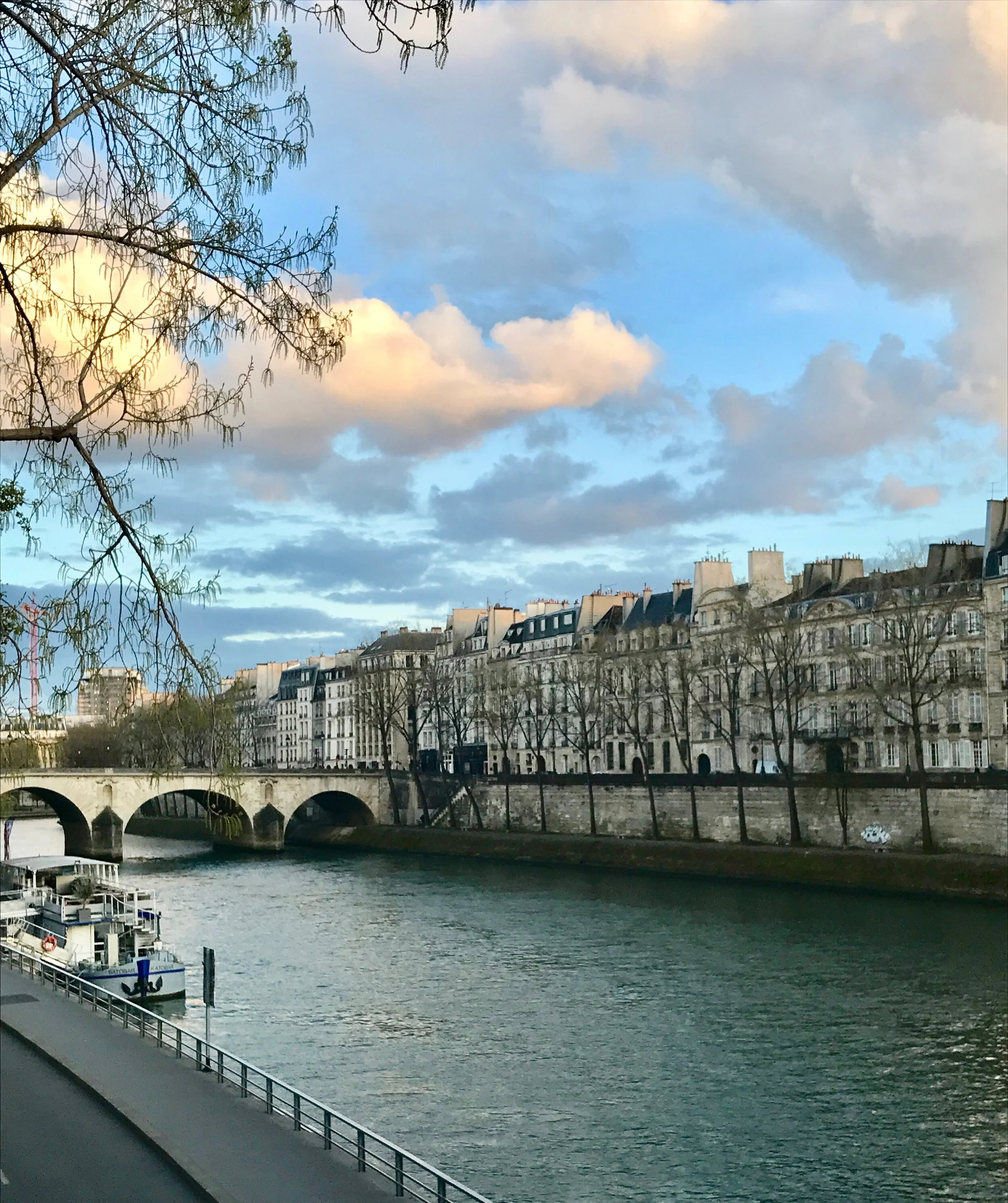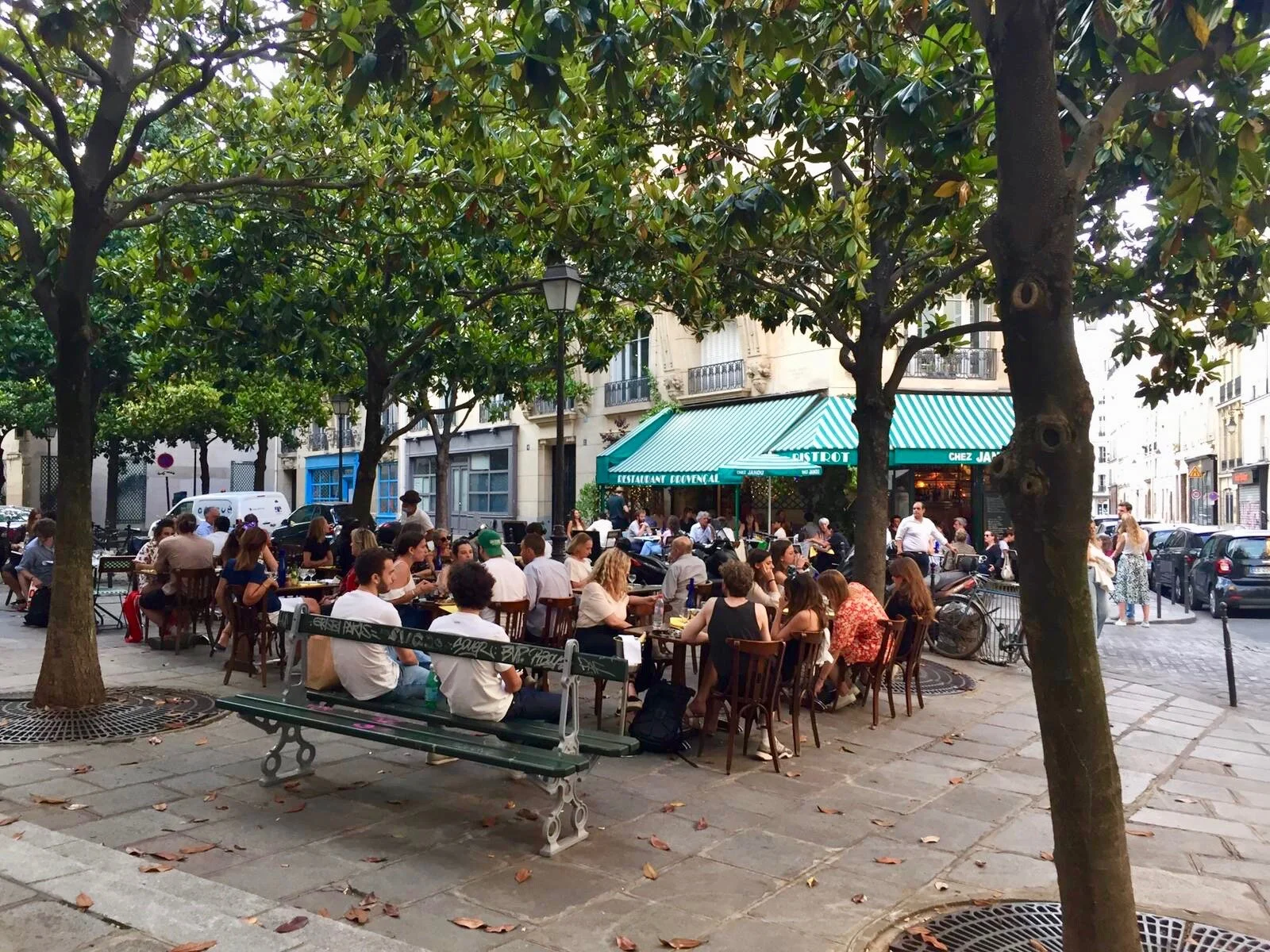The other day I cleaned my espresso machine. After that I made compote out of less-than desirable apricots. And after that I swirled some of it in a cup of plain yogurt and ate it. By then it was time for the New York Times daily crossword puzzle, where my skills have soared considerably the past couple of months.
All fine things to do, some of them, like the espresso machine, even necessary. But all of them done to avoid something else: writing. For as much time as I’ve spent in my head, which is where I need to be in order to spin thoughts into words, I haven’t been able to produce a single word. Clarity of thought and the right kind of solitude have gone missing, replaced by other things, none of them conducive to writing. Ernest Hemingway once said, “All you have to do is write one true sentence.” All you have to do.
I look for patterns, in my thoughts and elsewhere, as a starting point for exploring. Sure enough, one emerged. Paris. Granted, I have spent a lot of time in my mind in Paris during this “uncertain spring,” to use Virginia Woolf’s apt phrase. But even if that’s just me, Paris has still been hard to miss. From food to politics to pandemic, there’s been something in the newspaper—an article, an image —about Paris nearly every week. Paris is our touchstone. When the world is in despair, we tell ourselves there is always Paris.
While we sheltered indoors, the world outdoors came to us in stark images. Of New York, photographed often and widely, we saw exhausted health care workers; we saw the gravely ill, intubated and sequestered; we saw the refrigerated trucks. From around the globe there were horrifying, incalculably sad images. But not from Paris. From Paris we saw the city itself, timeless, resplendent, the largest jewel in the crown of great cities. The immortality of Paris juxtaposed against our own mortality.
In late March the New York Times ran a special section called “The Great Empty,” a photographic exposé of cities from San Francisco to Srinagar, India, evacuated. Every photograph resembled an Edward Hopper painting in its portrayal of emptiness. But featured on the most valuable journalistic real estate? Place de la Concorde. A gorgeous soft gray panorama punctuated by the gold tip of the Luxor obelisk in the foreground and the golden dome of Les Invalides in the background wrapped the front and back page spread.
Not everyone sees unqualified beauty in photographs devoid of people. In Eugène Atget’s sepia-toned photographs of Paris one hundred years ago, some see an unsentimental city indifferent to people. In the short introduction to “The Great Empty,” the journalist writes that “beauty requires human interaction,” otherwise empty squares and buildings look eerie, like lost civilizations. Still others have noted the chilling similarity between a Paris in confinement today and a Paris in hiding eighty years ago because of a different scourge that invaded the city.
For the moment, Paris may be for Parisians, but it is forever in our imaginations. More than any other place, it holds our dreams and desires. We want to sit in its cafés, stroll in its parks, wander along its river. In a world where the old normal is gone and the new normal yet to be defined, Paris is the standard-bearer. It is that place where we want to breathe, to live, to love. It is that place where we feel human.


